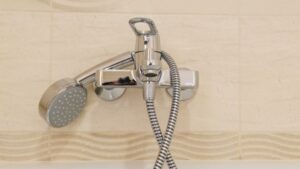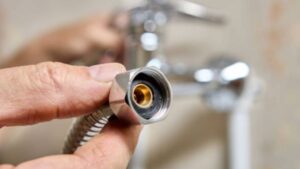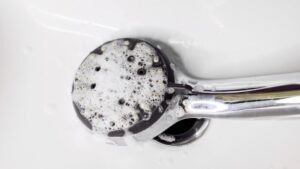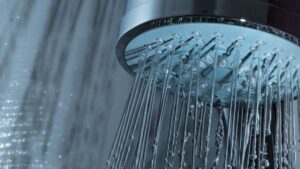When homeowners face dripping connections or poor water pressure at their kitchen or bathroom sinks, the culprit is often an incorrectly sized supply line. The standard faucet supply line size is 3/8 inches in diameter, which fits most residential faucets and provides adequate water flow for typical household usage.
This guide covers everything you need to know about faucet supply lines. From selecting the proper size and material to a step-by-step installation, you’ll find all the essential information right here.
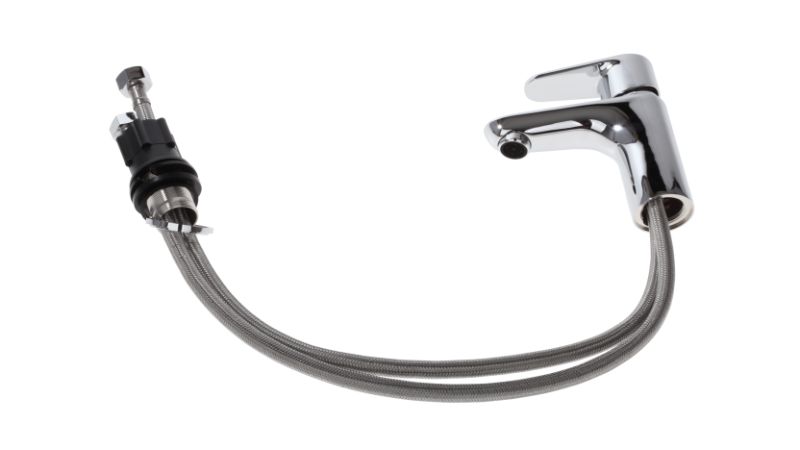
What Are Faucet Supply Lines?
“A faucet supply line is a flexible or rigid tube that connects your water supply valve to the faucet inlet. It serves as the vital pathway that delivers both hot and cold water from the home’s plumbing system directly to the sink.”
These essential components work quietly behind the scenes. They transport water from the main plumbing lines to kitchen and bathroom faucets throughout the house.
Core Functions:
- Water Delivery: Transporting hot and cold water.
- Pressure Management: Maintaining consistent water pressure for optimal performance.
- Leak Prevention: Ensuring a secure, watertight seal.
- Installation Flexibility: Allowing for easier connections in tight, under-sink spaces.
Common Materials for Faucet Supply Lines
Faucet supply lines are available in several different materials:
- Braided stainless steel
- Copper
- PEX (cross-linked polyethylene)
- Flexible polymer tubing
1. Braided Stainless Steel
This is the most popular and highly recommended option for faucet supply lines. These lines consist of a flexible inner tube, typically made of PVC or PEX, encased in a woven mesh of stainless steel braids.
- Pros: The stainless steel exterior provides excellent durability and protection against bursting, kinking, and physical damage. They are highly flexible, making installation straightforward even in tight spaces.
- Cons: They can be slightly more expensive than other options. It’s also important to ensure you’re buying a quality product, as low-end versions can be prone to corrosion over time, especially at the connection nuts.
2. PEX (Cross-Linked Polyethylene)
PEX is a flexible plastic tubing that has become a popular choice for all types of plumbing, including supply lines. They are typically color-coded—red for hot water and blue for cold water.
- Pros: PEX is extremely flexible, resistant to corrosion, and more affordable than braided stainless steel. Its smooth interior resists mineral buildup, which can be a problem in areas with hard water.
- Cons: It does not have the same burst strength as braided stainless steel and can be more susceptible to damage from pests or accidental puncture.
3. Solid Copper
Copper was the standard for many years and is still used in some applications, particularly for exposed plumbing where aesthetics are important. These supply lines are rigid pipes that need to be precisely cut and bent to fit.
- Pros: Copper is extremely durable, long-lasting, and has a classic, high-end look.
- Cons: It is rigid and unforgiving, requiring more skill and effort to install. It is also the most expensive option and can corrode over time, especially with acidic water.
4. PVC (Polyvinyl Chloride) and Vinyl
These are the most basic and least expensive options available. They consist of a simple, reinforced vinyl or PVC tube.
- Pros: Very cheap and easy to find.
- Cons: They are the least durable option and are prone to kinking, cracking, and bursting under pressure fluctuations. Due to their high failure rate, most plumbers strongly advise against using them for permanent installations. They are best suited for temporary fixes, if at all.
For most homeowners, braided stainless steel supply lines offer the best combination of durability, flexibility, and peace of mind.
Standard Faucet Supply Line Sizes: Diameter and Length
Choosing the correct size for your faucet supply lines is just as important as selecting the right material. An incorrect size can result in poor water flow, difficulty with installation, or even leaks. Supply lines are measured in two ways: diameter and length.
1. Standard Diameters
The diameter of a supply line refers to the width of the tube itself, which determines the volume of water it can carry.
| Category | Pipe Diameter(s) | Primary Applications & Characteristics |
| Standard Faucets | 3/8″ & 1/2″ | These are the most common sizes for connecting individual fixtures. The 3/8-inch line is typical for bathroom sinks, while the 1/2-inch line is standard for kitchen faucets, which often require slightly higher flow. Both provide ample water flow (up to 20-30 GPM) for everyday tasks. |
| High-Flow & Main Lines | 5/8″, 3/4″, & 1″ | This range bridges the gap between individual faucets and the home’s main supply. A 5/8-inch pipe serves high-performance faucets. The 3/4-inch pipe is the standard main water line for most houses, feeding multiple fixtures at once. 1-inch pipes are used for larger homes with greater water demands. |
| Commercial & Industrial | 1 1/4″ to 2″ | These large-diameter pipes are designed for very high-volume needs. You will find them in commercial buildings, apartment complexes, and industrial settings where they serve as main supply lines capable of handling extremely high flow rates (often over 40-60 GPM) to support extensive plumbing systems. |
How to Check Your Required Diameter: The best way to be sure is to look at your existing supply lines and the shut-off valve. The size is often stamped on the connector nut itself. If not, you can take a picture or bring your old supply line to the hardware store to match it.
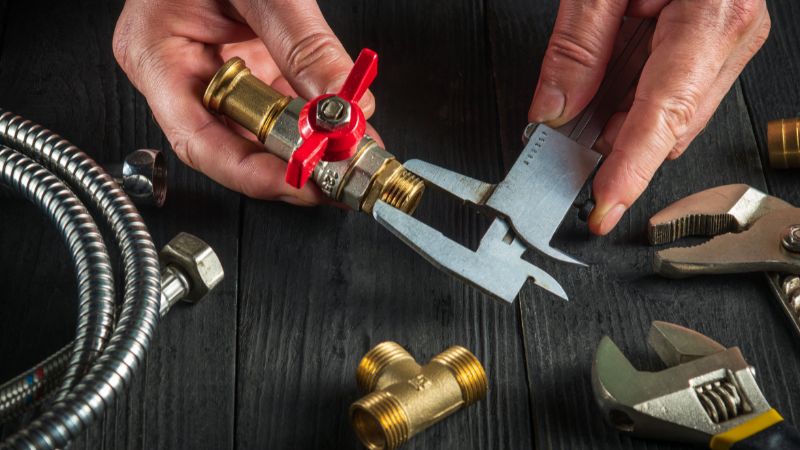
2. Common Lengths: 12″, 16″, 20″, 24″, and 30″
The length of the supply line is determined by the distance between your shut-off valve and the faucet’s water inlet.
Faucet supply lines are commonly available in lengths ranging from 12 inches to 30 inches.
| Length (Inches) |
Typical Use Case |
| 12″ | Best for installations where the shut-off valves are very close to the faucet, such as on some pedestal sinks. |
| 16″ | A very common size suitable for most standard bathroom and kitchen sink vanities. |
| 20″ | The most popular “universal” length that provides enough slack for easy installation in most standard setups. |
| 24″ | Ideal for larger vanities or when the shut-off valves are positioned lower on the wall. |
| 30″ | Used for taller cabinets or when the plumbing connections are further apart than usual. |
| 36″+ | Considered specialty lengths, used for custom cabinetry or unique plumbing configurations. |
Pro Tip: If in doubt, always choose a slightly longer line. You can easily loop the excess, but a line that’s too short is unusable.
How to Measure for Length:
- Use a flexible measuring tape.
- Measure the distance from the outlet of the shut-off valve to the inlet connection on the faucet tailpiece.
- Add a few extra inches to this measurement. You want the supply line to have a gentle, graceful loop. A line that is too short will be under constant tension, putting stress on the connections and increasing the risk of leaks. A line that is too long can get kinked or tangled, restricting water flow.
A good rule of thumb is to purchase a supply line that is slightly longer than your measurement to ensure a smooth, stress-free curve.
How to Install Faucet Supply Lines: A Step-by-Step Guide
Following these steps carefully will ensure a secure, leak-free connection.
Tools and Materials You’ll Need:
- New faucet supply lines (correct diameter and length)
- Adjustable wrench or basin wrench
- Bucket and old towels
- Flashlight or headlamp
- Plumber’s tape (Teflon tape), if recommended for your fittings
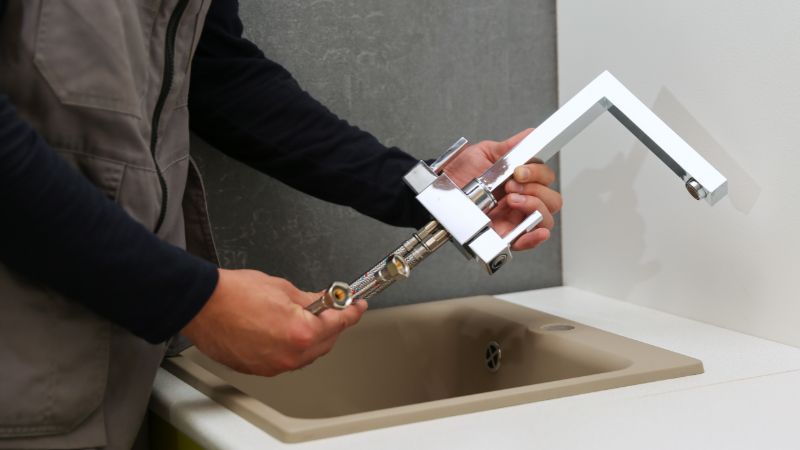
Quick Installation Guide:
- Turn off the water supply.
- Remove the old lines.
- Hand-tighten the new lines first, then give them a final quarter-turn with a wrench (do not overtighten).
- Slowly turn the water back on and check meticulously for leaks.
If you find a leak: Turn the water off immediately. The most common cause is a connection that is too loose or too tight. Try tightening the leaking nut slightly (no more than a quarter-turn). If it still leaks, you may need to disconnect, check the threads and the rubber seal, and reconnect it.
Once you are confident there are no leaks, your installation is complete.
When to Replace Your Faucet Supply Lines
Warning Signs That It’s Time for a Replacement
- Visible rust or corrosion on the connectors
- Bulging or bubbling in the hose
- Reduced water pressure
- Persistent, slow drips at the connection points that cannot be fixed by gentle tightening
- The supply line is past its recommended replacement age, even if it looks fine. The material can degrade from the inside out
FAQs
1. How often should faucet supply lines be replaced?
They should be replaced every 5 to 10 years to prevent unexpected leaks from age and wear.
2. What material is best for faucet supply lines?
Braided stainless steel is the best material because it is highly durable, flexible, and resistant to bursting.
3. Can I use a 1/2-inch supply line on a 3/8-inch faucet?
No, not directly. They won’t fit. You’ll need a small, inexpensive adapter that connects the 1/2-inch line to the 3/8-inch faucet connection. You can find these at any hardware store.
4. What’s the difference between braided and plastic supply lines?
Think of it like armor. Braided lines have a strong, metal coating that protects them from bursting and kinking. Plastic lines have no protection, making them weaker and much more likely to leak or break.
5. What tools are needed to install a 3/8 to 1/2 inch faucet adapter?
You just need two adjustable wrenches. Use one wrench to hold the pipe or faucet steady, and use the other to tighten the adapter. This prevents you from accidentally damaging your plumbing.
6. Are Faucet Supply Lines NPT?
Only one end is. The side that connects to the shut-off valve in your wall is typically an NPT thread. The side that connects to your faucet is a different type of connection called a compression fitting.


